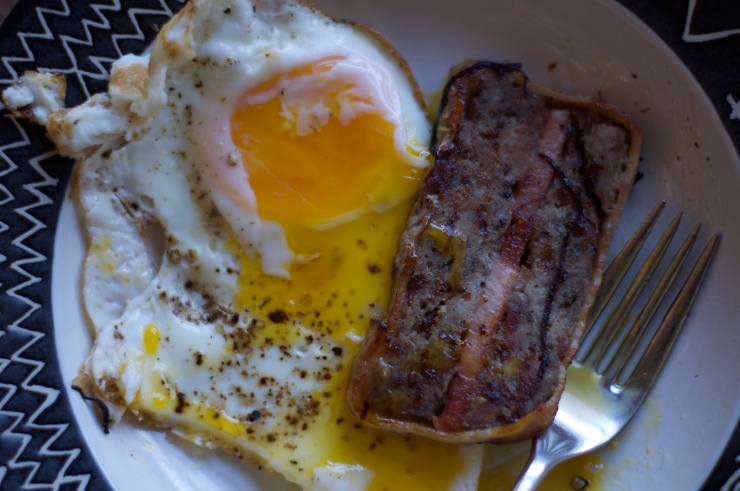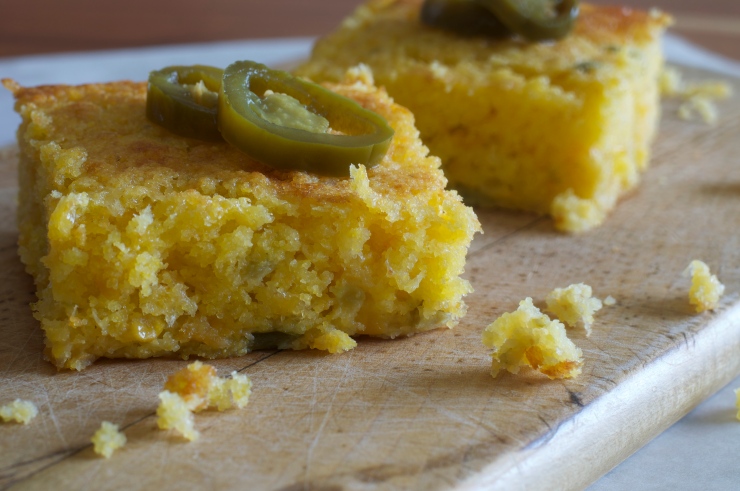Two Christmases ago, our family flew back East to the Big Apple to spend the holiday with my beloved Auntie Rboo. Her friend Hetty arrived for a Christmas feast with this pâté and in the blink of an eye it was gone. Naturally, we HAD to have the recipe.
Fast forward two years and we finally decided it was time to recreate this cholesterol laden magic. It turns out that the recipe came from Epicurious and was not a family secret as the flavour had suggested. The Epicurious recipe creates far too much pâté for our household to eat, so I have reduced the recipe by 2/3. Comments on the website suggest that if you make the full shebang, it freezes well (either before or after cooking). Another tempting suggestion was to include chopped pistachios.
In any case, we ate this on crusty white bread with cornichons as an appy on Christmas day and again as fried slices with farm fresh eggs for breakfast. Both were a treat and I have no doubt you will enjoy this immensely no matter how you serve it!

1/4 cup Cognac
1 tablespoon unsalted butter
1/3 cup minced onion
3/4 pound ground pork
4 ounces bacon (approx. 3 slices), finely chopped
8 bacon slices
1 garlic clove, pressed
1 teaspoon salt
1 teaspoon dried thyme
1/2 teaspoon ground allspice
1/3 teaspoon freshly ground black pepper
1 large egg, lightly beaten
2 tablespoon whipping cream
1 1/4 inch thick slice Italian cotto ham to fit the dimensions of pan
1 teaspoon Coarse sea salt

Set rack at lowest position in oven and preheat to 350°F. Boil Cognac until reduced to about 2 tablespoons. Cool.
Melt butter in heavy medium skillet over medium heat. Add onion and sauté until soft and translucent but not brown, about 8 minutes.
Combine ground pork and chopped bacon in large bowl. Using hands, mix together until well blended.
Add sautéed onion, garlic, salt, thyme, allspice, and pepper to bowl with pork mixture and stir until incorporated. Add egg, cream, and reduced Cognac. Stir until well blended.
Line 8x4x2.5-inch metal loaf pan with bacon slices, arranging slices across width of pan and lastly halved slices on each short side of pan and overlapping pan on all sides. Using hands, lightly and evenly press half of meat mixture onto bottom of pan atop bacon slices. Place ham over in single layer. Top with remaining meat mixture.
Fold the standing ends of the bacon slices over. Cover pan tightly with foil. Place pan in a larger baking pan or roast pan and transfer to oven. Pour boiling water into larger pan to come halfway up sides of loaf pan creating a water bath. Bake pâté until a thermometer inserted through foil into center registers 155°F, about 2 hours minutes.
Remove loaf pan from baking pan and transfer to rimmed baking sheet. Place another loaf pan on top with some heavy cans inside to weigh down pâté. Chill overnight. Can be made about 4 days ahead.
To serve, place loaf pan with pâté in larger pan of hot water for about 3 minutes. Invert pâté onto platter; discard fat from platter and wipe clean. Cut pâté crosswise into slices. Slices can be fried in a bit of butter if you are serving them with eggs for breakfast.










